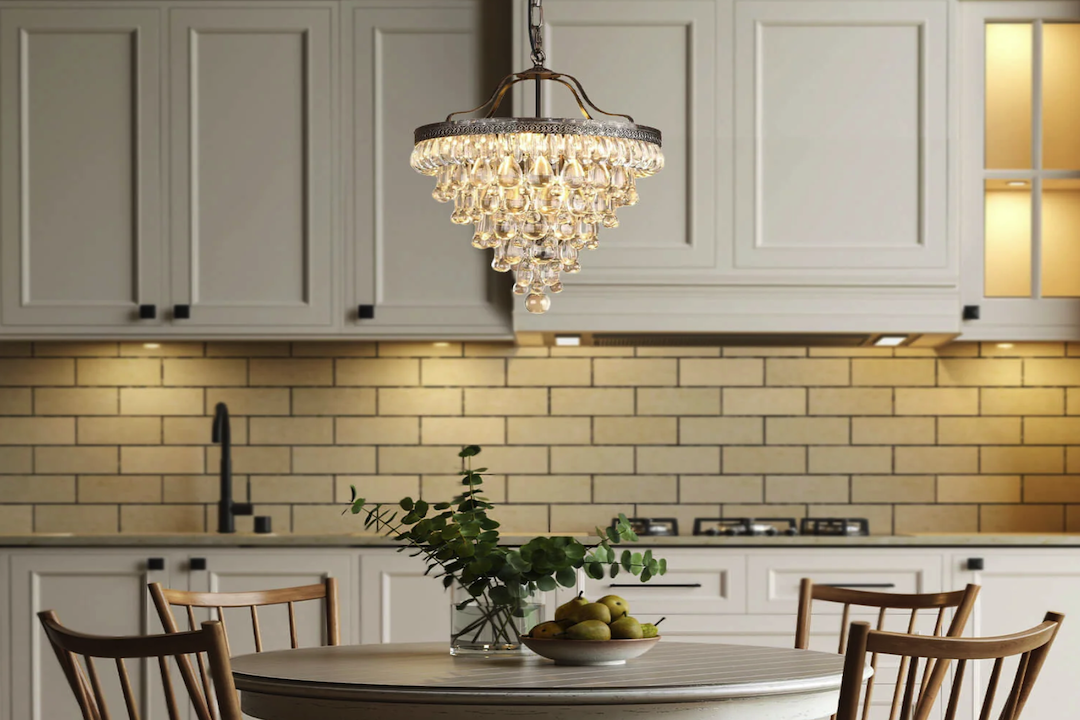
Modern American Chandelier: Bedroom Elegance
Chandeliers have long been synonymous with elegance and opulence, tracing their origins back to medieval times when they were primarily used in grand halls and churches. In the context of American bedrooms, the evolution of chandeliers reflects broader trends in design, technology, and cultural preferences. Initially, chandeliers were crafted from wrought iron or wood, adorned with candles that provided light in an era before electricity.
These early designs were often rustic and functional, serving as both a source of illumination and a decorative element. As the 19th century approached, the introduction of gas lighting transformed chandeliers Shoowz into more intricate and ornate fixtures, often featuring elaborate glasswork and embellishments that showcased the craftsmanship of the time. The advent of electric lighting in the early 20th century marked a significant turning point for chandeliers in American homes.
With the ability to incorporate electric bulbs, designers began to experiment with new materials such as crystal and glass, leading to the creation of stunning pieces that became focal points in bedrooms. The Art Deco movement of the 1920s and 1930s brought about a shift towards geometric shapes and bold designs, while mid-century modern styles favored simplicity and functionality. Today, chandeliers are available in a myriad of styles, from traditional to contemporary, allowing homeowners to express their personal tastes while enhancing the overall ambiance of their bedrooms.
Choosing the Right Style and Size for Your Bedroom
Selecting the appropriate chandelier for your bedroom involves careful consideration of both style and size. The style of the chandelier should harmonize with the existing decor, whether it be traditional, modern, or eclectic. For instance, a classic crystal chandelier can add a touch of glamour to a traditional bedroom adorned with rich fabrics and antique furniture.
Conversely, a sleek, minimalist design may be more suitable for a contemporary space characterized by clean lines and neutral colors. It is essential to assess the overall aesthetic of the room to ensure that the chandelier complements rather than clashes with other design elements. Size is another critical factor when choosing a chandelier.
A fixture that is too large can overwhelm a small bedroom, while one that is too small may get lost in a spacious room. A common guideline for determining the appropriate size is to add the dimensions of the room (in feet) together and convert that number into inches. For example, a bedroom measuring 12 feet by 14 feet would suggest a chandelier with a diameter of approximately 26 inches.
Additionally, consider the height of the ceiling; higher ceilings can accommodate larger chandeliers or those with longer drop lengths, while lower ceilings may require flush mounts or shorter designs to avoid creating a cramped atmosphere.
Incorporating Modern Chandeliers into Your Bedroom Decor
Incorporating modern chandeliers into bedroom decor can elevate the space and create a striking visual impact. Modern chandeliers often feature innovative designs that blend functionality with artistic expression. For example, a chandelier made from metal rods arranged in an abstract pattern can serve as a conversation starter while providing ample light.
When integrating such pieces into your bedroom, it is crucial to consider how they interact with other elements in the room, such as wall colors, furniture styles, and textiles. One effective way to incorporate a modern chandelier is by using it as a statement piece above the bed or in a reading nook. This placement not only draws attention but also enhances the room’s overall design narrative.
Additionally, layering lighting is essential for creating a well-balanced atmosphere; combining a modern chandelier with bedside lamps or wall sconces can provide both ambient and task lighting. By thoughtfully selecting complementary fixtures and decor elements, homeowners can achieve a cohesive look that reflects their personal style while maximizing the functionality of their bedroom space.
Maximizing Functionality and Aesthetics with Chandelier Placement
The placement of a chandelier in a bedroom is pivotal in maximizing both its functionality and aesthetic appeal. Ideally, a chandelier should be positioned at an appropriate height to ensure it provides adequate illumination without obstructing sightlines or creating hazards. A general rule of thumb is to hang the chandelier approximately 30 to 36 inches above the top of the bed or furniture below it.
This height allows for optimal light distribution while maintaining an elegant visual line. In addition to height considerations, the location of the chandelier can significantly influence the room’s ambiance. Centering the chandelier in relation to the bed or other focal points creates symmetry and balance within the space.
For larger bedrooms, multiple smaller chandeliers can be used to define different areas, such as seating arrangements or dressing areas. This approach not only enhances functionality by providing targeted lighting but also adds layers of interest to the overall design. By carefully considering placement, homeowners can ensure that their chandeliers serve as both practical light sources and stunning decorative elements.
Lighting Control and Dimming Options for Chandeliers in the Bedroom
In modern bedroom design, lighting control plays an essential role in creating versatile atmospheres that cater to various activities and moods. Dimming options for chandeliers are particularly valuable, allowing homeowners to adjust brightness levels according to their needs. For instance, softer lighting may be preferred during intimate moments or when winding down for sleep, while brighter settings are ideal for reading or engaging in other tasks.
To achieve effective dimming capabilities, it is important to select compatible bulbs and dimmer switches. LED bulbs are increasingly popular due to their energy efficiency and longevity; however, not all LED bulbs are dimmable. Homeowners should ensure that both their bulbs and dimmer switches are designed for compatibility to avoid flickering or reduced performance.
Additionally, smart home technology has made it easier than ever to control lighting remotely or through voice commands, providing an added layer of convenience for managing chandelier brightness in the bedroom.
Maintenance and Cleaning Tips for Modern Chandeliers
Maintaining modern chandeliers is crucial for preserving their beauty and functionality over time. Regular cleaning not only enhances their appearance but also ensures optimal light output by removing dust and grime that can accumulate on surfaces. The frequency of cleaning will depend on factors such as location (e.g., proximity to kitchens or high-traffic areas) and material composition.
To clean a chandelier effectively, start by turning off the power supply and allowing it to cool if it has been recently used. Use a soft cloth or feather duster to gently wipe down surfaces, taking care not to damage delicate components such as crystals or glass shades. For more thorough cleaning, consider using a mixture of warm water and mild dish soap; however, avoid harsh chemicals that could cause discoloration or damage.
For intricate designs with multiple facets or hard-to-reach areas, using a microfiber cloth attached to an extendable duster can be particularly effective. Regular maintenance will not only keep your chandelier looking pristine but also prolong its lifespan.
Energy Efficiency and Sustainability in Modern Chandelier Designs
As environmental awareness continues to grow, energy efficiency has become an increasingly important consideration in modern chandelier designs. Many contemporary chandeliers now incorporate LED technology, which offers significant advantages over traditional incandescent bulbs in terms of energy consumption and longevity. LED bulbs use up to 80% less energy than incandescent options while lasting up to 25 times longer, making them an eco-friendly choice for homeowners looking to reduce their carbon footprint.
In addition to energy-efficient lighting options, sustainable materials are also gaining traction in chandelier design. Manufacturers are increasingly sourcing materials such as reclaimed wood or recycled metals to create unique fixtures that minimize environmental impact. Furthermore, some designers are exploring innovative approaches like using biodegradable materials or incorporating solar-powered elements into their designs.
By choosing chandeliers that prioritize energy efficiency and sustainability, homeowners can enjoy beautiful lighting solutions while contributing positively to environmental conservation efforts.
Budget-Friendly Options for Adding Elegance to Your Bedroom with Chandeliers
While chandeliers are often associated with luxury and high price tags, there are numerous budget-friendly options available that can still add elegance to your bedroom decor. One approach is to explore alternative materials such as acrylic or resin, which can mimic the appearance of crystal at a fraction of the cost. These materials are lightweight and versatile, allowing for creative designs that can fit various styles without breaking the bank.
Another cost-effective strategy is to shop at discount retailers or online marketplaces where you can find stylish chandeliers at reduced prices. Many brands offer sales or clearance items that provide excellent value without sacrificing quality or design aesthetics. Additionally, consider DIY projects where you can customize existing fixtures with paint or embellishments to create a unique look tailored to your taste.
By being resourceful and open-minded about design possibilities, homeowners can successfully incorporate chandeliers into their bedrooms without exceeding their budgets while still achieving an air of sophistication and charm.


